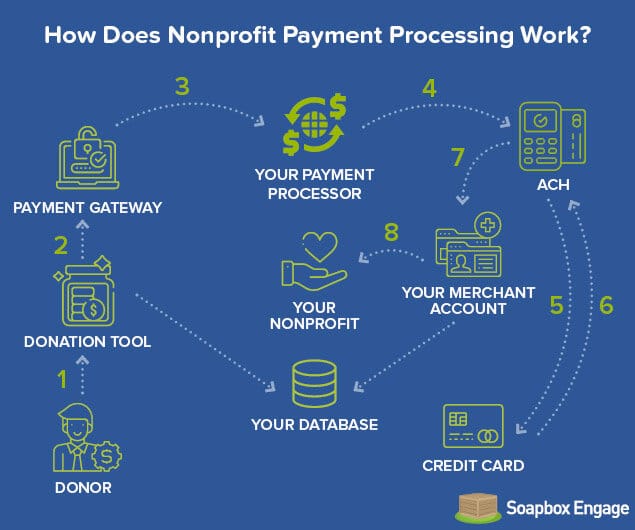
As a nonprofit leader, you know that your organization is tax-exempt by definition. To allow you to put as much of your funding as possible toward making a difference in your community, the IRS granted your nonprofit 501(c)(3) status, meaning that you don’t have to pay federal taxes.
However, this doesn’t mean that you can sit back and relax come tax season. Nonprofits still have to complete a variety of tax forms to maintain transparency about how they’re using their resources and help staff members file their individual tax returns.
As you begin compiling the necessary information to fill out all of these forms, it’s easy to get lost in the complexities of data collection and reporting. Every nonprofit has a slightly different financial situation, so it’s helpful to reach out to your organization’s accountant to navigate your unique tax filing needs and ensure compliance with federal regulations.
For now, let’s walk through the basics of seven of the most common nonprofit tax forms. To help you get a better understanding of their purpose, we’ve divided them up based on whether they apply to your entire organization or just to your employees. Let’s get started!
Organizational Tax Forms
Organizational tax forms are used to report and track the financial activities of your entire nonprofit. As a condition of 501(c)(3) status, you have to file certain tax forms every year, and make some of them available to the public upon request. So these forms are also critical for your organization to remain tax exempt. Let’s look at the three main types.
1. Form 1023
The IRS Form 1023 is one of the major documents that you filed upon establishing your nonprofit, in addition to your bylaws, articles of incorporation, employer identification number (EIN), and fundraising registration for your state. Upon approval, the IRS sent you an official letter confirming your 501(c)(3) status, which you should always keep a copy of in your organization’s records.
In most cases, your organization will only need to file Form 1023 once. The only exception to this rule is if your tax-exempt status is revoked or suspended for some reason. The form is 28 pages long and very detailed, so make sure to comply with all 501(c)(3)-specific regulations so you don’t have to complete it twice!
2. Form 990
The IRS Form 990 is probably the best-known nonprofit tax form because it serves as your organization’s annual tax return. Besides demonstrating to the government that your nonprofit has handled its finances responsibly over the past year, your Form 990 also holds your organization accountable to supporters and stakeholders once it’s made publicly available.
There are four versions of the Form 990, and which one your nonprofit completes depends on your annual gross receipts and total assets. Jitasa’s guide to filing Form 990 breaks down the types as follows:
- Form 990-N (or e-postcard): Gross receipts total less than $50,000.
- Form 990-EZ: Gross receipts total between $50,000 and $200,000 and total assets equal less than $500,000.
- Form 990 (full version): Gross receipts total more than $200,000 or total assets equal more than $500,000.
- Form 990-PF: Filed by all private foundations regardless of gross receipts or total assets.
No matter which version your organization completes, the Form 990 filing deadline is the 15th day of the fifth month after your fiscal year ends. For most nonprofits, whose fiscal year follows the calendar year, the deadline is May 15.
Failing to file your Form 990 for three consecutive years is one way your organization can lose its tax-exempt status and have to complete a new Form 1023, so make sure to get your returns in on time every year!
3. State-Specific Filings
Depending on where your nonprofit operates, you may or may not need to file additional tax forms with your state government. A few of the states that request additional filings include:
- California requires nonprofits to file Form 199, the Exempt Organization Annual Information Return, to maintain tax-exempt status with the state.
- New York has a similar required form called the Annual Filing for Charitable Organizations (Form CHAR500) that includes both financial and governance information.
- Florida asks for an additional filing from nonprofits that are exempt from paying state sales tax in addition to their income tax exemption, known as Form DR-5.
Other states, such as Maine, Montana, and Alaska, don’t require nonprofits to file any additional tax forms. However, some of these state governments ask for a copy of each organization’s Form 990 or annual report for their records. The IRS website links out to the specific requirements for each state—remember to check the website before you file your tax returns each year to ensure you have the most up-to-date information.
Employee Tax Forms
In addition to being a charitable organization, your nonprofit is also an employer, meaning that you have to complete several tax forms that apply to your employees. Astron Solutions’ guide to nonprofit human resources explains that ensuring employment tax compliance is essential for smooth operations at your organization. Plus, your employees need official reports of their earnings and tax withholdings to file their own tax returns.
While the full set of forms you fill out will depend on your nonprofit’s employment structure, here are four common types you should be familiar with. With the exception of Form W-9, which is filled out on a case-by-case basis, the deadline to complete all of these forms each year is January 31.
4. Form W-3
The Transmittal of Wage and Tax Statements, more commonly known as Form W-3, provides a summary of all employee earnings and tax withholdings for your entire organization. On it, you’re required to report all wages, tips, and other compensation paid out to the staff members on your nonprofit’s payroll, as well as the total federal income tax that has been withheld from their paychecks throughout the year.
5. Form W-2
Form W-2 is the annual statement of wages paid to and taxes withheld from each of your employees. You’ll need to issue a separate W-2 to every individual staff member on your payroll.
You should have six total copies of each Form W-2 you complete. Three of these copies will be issued to the employee, and three are for you as the employer. You’ll file one copy of every W-2 you issue with the IRS and one with your state government, and the third should be saved among your internal records. Each staff member will do the same with their three copies—one copy is for their federal tax filing, one goes to their state, and one is theirs to keep.
6. Form W-9
Forms W-3 and W-2 only apply to staff members on your long-term payroll. However, there may be situations where your nonprofit hires an external professional—also known as a contractor—to assist with a specific project. For example, you might work with a third-party fundraising consultant during a capital campaign or pay a professional web designer to do a one-time revamp of your organization’s website.
This is where Form W-9 comes into play. Its purpose is to request tax identification information from contractors so that your nonprofit can accurately report the payments you make to them come tax season. You are required to file a W-9 for anyone who is not an official employee, but has worked for your organization and has been paid at least $600 throughout the year. Make sure to request a W-9 from these contractors early in your working relationship so you have what you need at tax time.
7. Form 1099
Form 1099, the Miscellaneous Income Form, is the tax form issued to contractors based on the information provided on their W-9. It works similarly to Form W-2 in that you’ll complete it on an individual basis for each contractor, and there are also six copies which should be used the same way as the copies of the W-2.
Nonprofit tax filings may seem complicated at first, but they help increase transparency with the government, your supporters, and your employees about how your organization is managing its finances. Once you understand the differences between the various organizational and employee tax forms, you’ll be well on your way to ensuring compliance and accountability. But if you have questions at any stage of the process, don’t hesitate to contact a nonprofit accountant to help you complete the forms and file them on time.
About the Author
Jon Osterburg has spent the last nine years helping more than 100 nonprofits around the world with their finances as a leader at Jitasa, an accounting firm that offers bookkeeping and accounting services to not for profit organizations.





